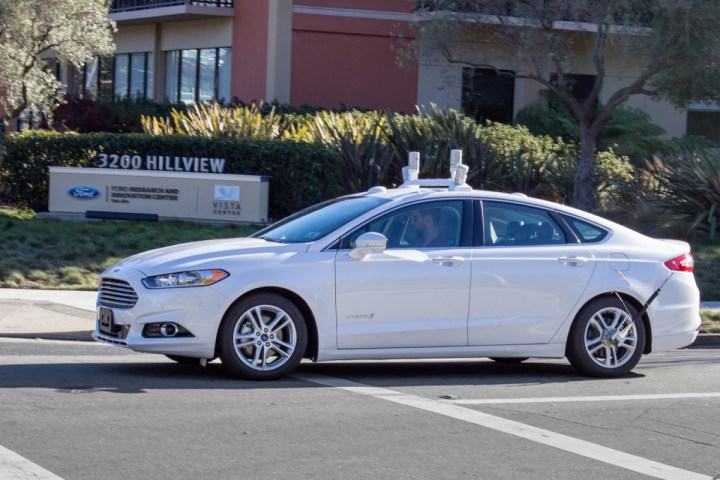
Buzzwords aside, Ford shared several key announcements this morning so we’ll do our best to break them down for you.
Most significant is news that Ford will produce a high-volume, SAE Level 4 fully autonomous vehicle for ride sharing/hailing services in 2021. To put it another way, this production car won’t have a steering wheel, gas or brake pedals, or driver, and will be shuttling you around beginning in just five years.
Read More: Ford Invests In Autonomous Vehicle Mapping
For those who aren’t familiar with SAE levels, here’s the deal. Levels 1 and 2 are basically driver assistance technologies that we’ve already experienced in mass production cars. Lane-keeping assist, adaptive cruise control, and similar functions. fall under this category.
Level 3 is an odd middle ground that transfers full driving control between the vehicle and a driver. Ford expressly stated that it wanted to avoid focusing on this tech. because it doesn’t quite know how to manage the hand-off of control in a safe way. Finally, levels 4 and 5 are completely autonomous driving situations. No driver required.
Ford went on to clarify that it’s targeting ridesharing use because it doesn’t expect consumer-ready autonomous cars to be available for many years. “The economics just don’t make sense,” said Nair. By building cars for these services, however, Ford opens new revenue channels by producing the actual cars, and also by partnering with service providers to get a percentage of the revenue.
The U.S. automaker also announced an expansion of its Silicon Valley-based R&D efforts. Ford’s presence in the region will grow from a single building to a full campus of buildings and double its staff by the end of 2017. Ford went on to say that by the end of this year it will have the largest fleet of self-driving test vehicles of any automaker. This will all be contained in Ford’s “Smart Mobility” plan.
Nair capped Ford’s announcement by emphasizing that Ford isn’t just a hardware company. The automaker stressed that by building a team of engineers (including the acquisition of several sensor, machine learning, and mapping startups), it can integrate efforts to develop autonomous cars from the ground up.


